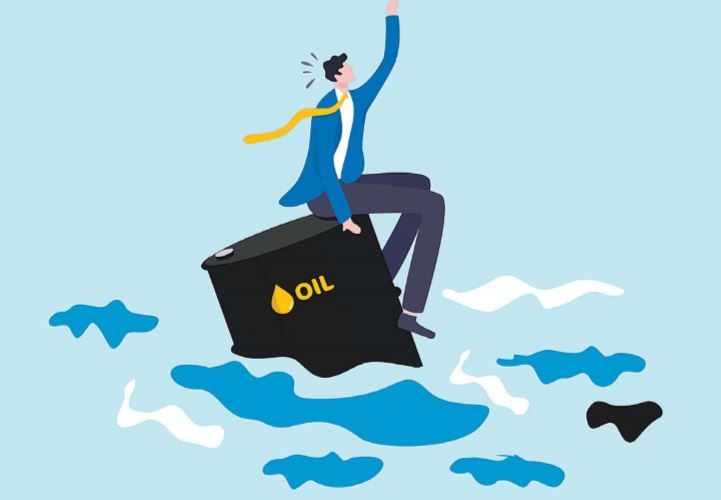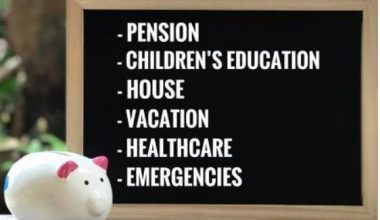There was an abrupt rise in commodity prices when Russia invaded Ukraine in the last week of February 2022. Supply constraints and worries about inflation have helped commodity prices to surge to their record or multi-year highs.
Later on, prices of several commodities showed corrections, while that of energy commodities held firm. Restricted supplies from the world’s largest fossil fuel exporter, Russia, continued to weigh on the market.
Following Russia’s invasion of Ukraine, US, UK, European Union and their close allies launched the most comprehensive and unprecedented economic assault on a sovereign state in recent history. This includes freezing the assets of the Russian central bank, barring Russian banks from international transactions, and limiting imports of Russian oil and gas.
Russia is one of the world’s leading producer and exporter of fossil fuel and natural gas to the global markets It has the second largest coal reserves and the sixth largest oil reserves. Russia is also one of the largest producers and exporters of crude oil.
Natural gas prices at multi-year highs. Is Russia using natural gas as a geopolitical weapon?
Gas prices at various international markets are currently quoted double or triple the price since the start of the year. The US NYMEX gas futures have gained over 110 percent since January. Meanwhile, the European benchmark, TTF gas has jumped a whopping 380 percent in the same period.
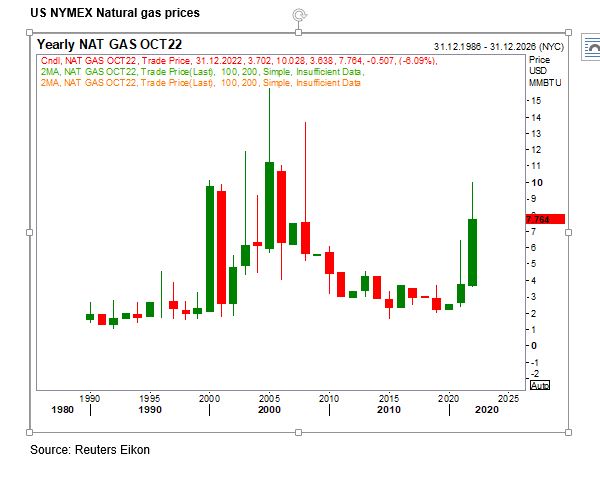
Russia supplies a significant volume of fossil fuels to many European countries. Almost 40 percent of the gas that comes to European countries is from Russia. This gives Russia a significant amount of leverage for using gas as a geopolitical weapon.
Europe accuses Russia of weaponizing energy supplies in retaliation to western sanctions imposed on Russia. But Russia says the western countries have launched economic war and sanctions have hampered gas supplies.
Since the start of the war, Russia has been limiting gas supplies to many European countries. Due to restrictions on international trade, Russia demanded their payments in Russian Rouble. Several countries have denied the order and Russia cut off supplies to these countries.
The amount of gas coming from Russia to Europe is currently less than a third of the same period last year. Russia’s Gazprom, the state-run Russian energy giant drastically cut gas deliveries to Europe through the Nord Stream 1 pipeline recently. As a result, European gas futures prices quadrupled compared to the pre-war period.
In the first week of September, Gazprom completely halted the flow of gas through Nord Stream 1, in line with an earlier announcement. Nord Stream 1 pipelines stretch under the Baltic Sea from Russia to north-eastern Germany through which the country meets most of its energy needs.
The energy crunch in Europe has also plunged the zone’s economy into its worst energy crisis since 1973.
To beat the Russian chokehold on gas supplies, Europe is looking everywhere for energy to keep its economy running. Measures like reviving coal field power plants, spending billions on terminals to bring LNG from the US, and discussions with other gas majors to nail down energy deals are likely to reduce the dependence on Russian gas. Although the current storage levels give some comfort to the region, as the cold weather approaches, demand for energy will go up, adding to concerns.
G7’s plan to impose a price cap on Russian oil to make crude oil prices unpredictable
Despite prices falling back to levels seen before Russia’s invasion of Ukraine, crude oil remains volatile due to ongoing uncertain market fundamentals.
In March, the benchmark NYMEX crude prices hit a 14-year high of $130 when Russia started the military operation in Ukraine. The west’s threat of the Russian oil embargo spooked the global energy markets as the country plays an outsized role in the global energy market. However, it lost momentum later as it started to gradually increase its oil production after sanctions-related curbs.
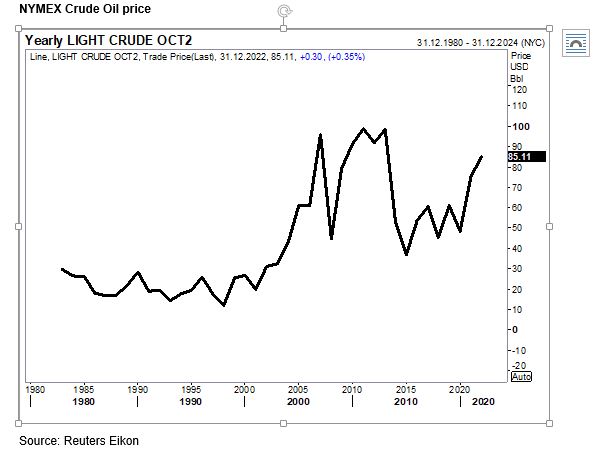
Recently, the G7 leaders proposed a price cap on Russian oil to keep down Russian oil revenue.
The group of seven nations – US, Japan, Germany, Britain, France, Italy, and Canada – and the European Union are working to set a price cap on Russian oil. This is to limit Russia’s ability to fund its military action in Ukraine. This unprecedented measure, set to begin on December 5, will cut Russia’s oil revenue without reducing its exports to the global market.
The group also wants to involve China and India, but it is highly improbable given that both nations have been buying Russian oil at steep discounts. Russia has been maintaining its oil revenue, after the oil embargo by the west, by increasing supply to India and China.
Russia is becoming increasingly reliant on just two countries when it comes to selling its crude oil, with China and India now accounting for more than 40% of export volumes.
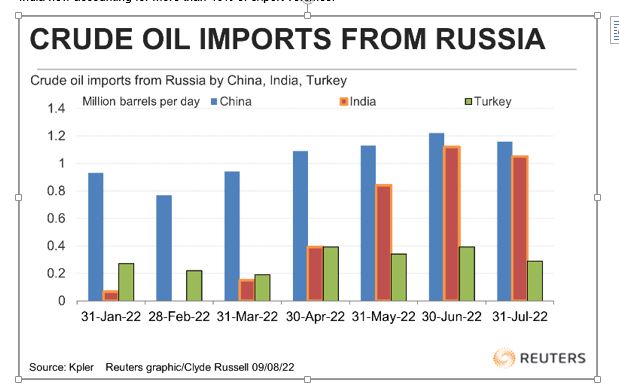
However, a cap on prices could help to force down global oil prices in the long term but might see extreme volatility in the coming months.
Russia announced that it would retaliate against nations that enforce the cap. They might stop shipping oil to such nations or come up with other creative measures to punish the participating nations.
Impact on Europe and fears of recession
Since Russia cut down fuel exports to European countries, gas and electricity prices have touched record levels in 2022. The skyrocketing electricity prices across Europe are intrinsically linked to the high price of gas.
The EU depends on Russia for over 40 percent of its natural gas supply, while German dependence on Russia is even higher at around 50-60 percent. Currently, Europe has no alternative to spending billions of Euros every month on Russia’s piped natural gas. EU’s diversification efforts and supply-side solutions like alternative supply or development of new infrastructural support may take several years to achieve.
There is increasing pressure on EU households, small and medium-sized businesses, and the sector at large due to this sharp increase in electricity prices. The most affected are vulnerable consumers and the energy poor, but middle-class households are now increasingly at risk of being unable to pay their energy bills. To protect European Union customers from rising energy prices this winter, the European Commission has proposed emergency measures.
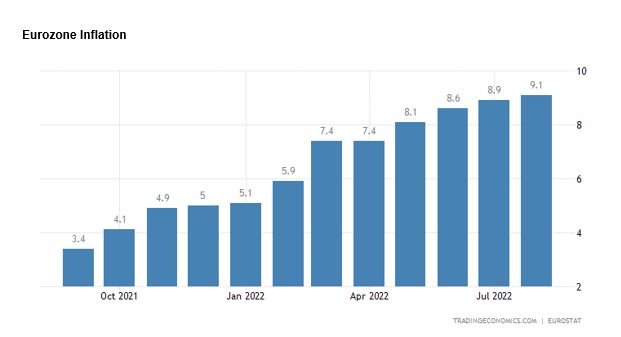
The European Union is struggling to bring its energy crisis under control. Although Europe is looking for several backup plans, it is unclear whether it is possible before the winter. If Europe fails to find a permanent solution at the earliest, Europe’s economy would feel the cold this winter. It could push the block into a recession, which is already battling with its highest inflation since 1997.

